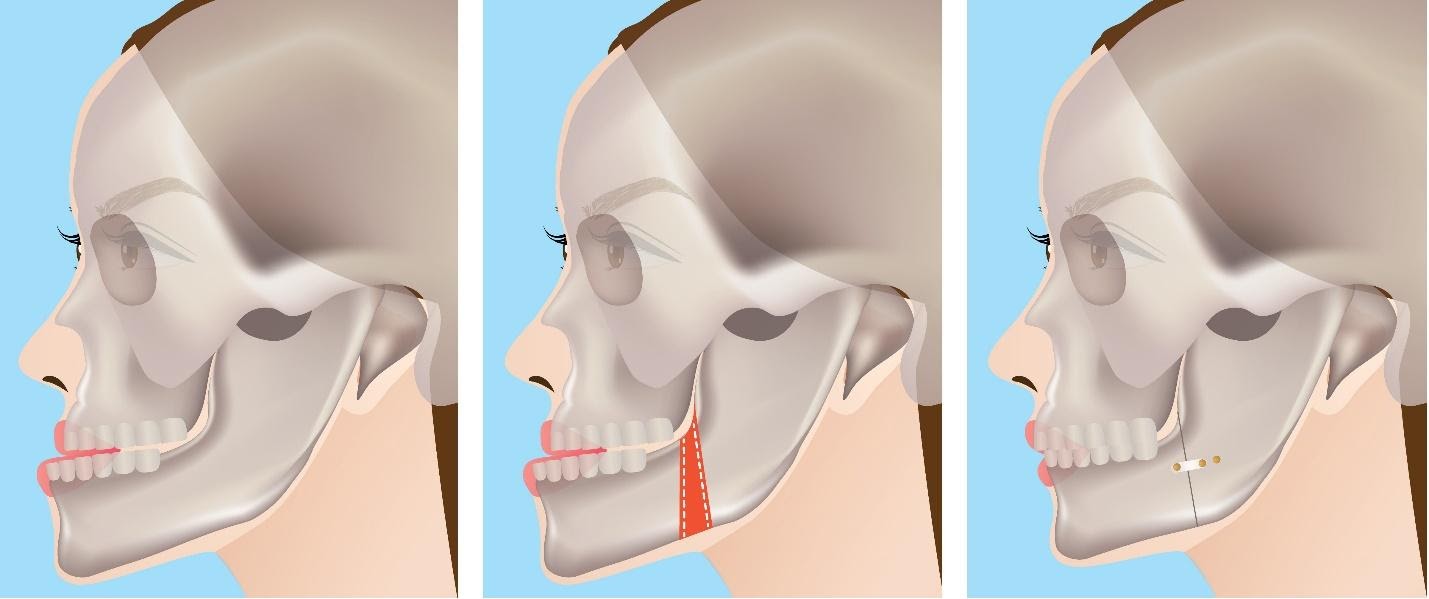Jaw Correction Surgery: What Does It Do?
Jaw Correction Surgery: What Does It Do?

Jaw correction surgery goes hand in hand with orthodontic treatments. Many have reached an improved smile with the help of orthodontic appliances. What is often not mentioned is that the teeth are not the only ones that need fixing to achieve a better smile and appearance, but also the jaw. Through jaw correction surgery, many functional and aesthetic struggles can be eliminated. To know what these are, continue reading below.
What is a
Jaw Correction Surgery?
Jaw correction surgery, also known as orthognathic surgery, is a procedure that is responsible for the repositioning of the maxilla (upper jaw) and the mandible (lower jaw). The main goal of this procedure is to enhance the jaw’s form and function through the alteration of the skeletal structure. With the said goal, a jaw correction surgery basically can correct malocclusions, improve facial appearance, and fix any hindrance in proper breathing like sleep apnea.

Benefits of
Jaw Correction Surgery
According to John Hopkins Medicine, 15% of malocclusion and jaw problems cannot be corrected with only braces. For people who belong in the 15%, it is recommended that they have a jaw correction surgery since it will bring them more significant benefits as compared to having braces alone. Some of the benefits include:
- Improves the appearance
- Increases confidence in oneself
- Repair of facial defects
- Relief from sleep apnea
- Relief from jaw problems
- Allows the mouth to comfortably and adequately close
- Improves the symmetry of the face
- Fixes severe malocclusions
- Prevents teeth from further damage
- Corrects speech problems
- Helps in easier biting and chewing
Types of
Jaw Correction Surgery
During a jaw correction surgery, the surgeon can either fix the upper jaw, lower jaw, or both. To bring a solution to the jaw problems that the patient is facing, they usually perform one of the three most common types of jaw correction surgery procedures, which are the Le Fort I Osteotomy, Bilateral Sagittal Split Osteotomy, and the Bimaxillary Osteotomy.
Le Fort I Osteotomy
- This type is responsible for moving up or down, relocating, or rotating the maxilla (upper jaw) after being separated from other facial bones.
Bilateral Sagittal Split Osteotomy
- This type detaches the mandible (lower jaw) so that the surgeon can rotate it or move it forward or backward.
Bimaxillary Osteotomy
- This type is meant for more complex cases since it is a combination of the Le Fort I osteotomy and bilateral sagittal split osteotomy. This is mostly done on patients whose face shape is asymmetrical, who have issues with both the lower and upper jaw, and those whose upper and lower teeth are far apart.
Jaw Correction
Surgery Procedure
A consultation is first done before undergoing the procedure. It is in this stage that the surgeon will assess if the patient is qualified for jaw correction surgery. Once the patient is deemed eligible to push through with the procedure, they will perform an x-ray or CT scan to be able to assess the jawbone further. An impression of the patient’s teeth will also be taken, as well as photographs and a 3D image scan, which will help in the treatment plan and will also show the patient the possible outcome of the surgery.
The duration of a jaw correction surgery takes about two to four hours, depending on the complexity of the patient’s case. General anesthesia is also used for this procedure to help the patient fully relax by going into a deep sleep. Once the anesthesia has taken effect, the following steps are done during the surgery:

Bilateral Sagittal Split Osteotomy
- The surgeon first makes an incision inside the mouth where the lower jaw and cheek meet.
- They then detach the lower jaw, making sure that the tooth-bearing part is fully included.
- The jaw is then moved forward if the patient has a deficient lower jaw or moved backward for those with protruding jaws.
- Once the lower jaw has been repositioned, the surgeon secures it with titanium screws and plates to keep it in place and to hold the bone segments back together.
Le Fort I Osteotomy
- For this procedure, the surgeon makes the incisions on the upper lip.
- They then horizontally detach the upper jaw from the cheek and the base of the nose.
- Once this has been done, the surgeon repositions the upper jaw where it is deemed to fix a bad bite or deformity.
- The lower jaw is then secured in its new place and is attached to its neighboring bone segments using titanium plates and screws.
For bimaxillary osteotomy, the surgeon performs both the procedures above, simultaneously making the treatment more complex and the surgery time a little longer.
Like all surgeries, especially invasive ones, swelling and pain are normal. It peaks within three days after the surgery and gradually fades within weeks. Depending on how complex your jaw corrections surgery was, you may stay in the hospital for one to two nights for observation and aftercare. Before you get discharged from the hospital, you will be given specific instructions on how to take care of yourself during the recovery period. Your doctor may provide you with pain medication and antibiotics. In the past and on rare occasions, some patients may need “intermaxillary fixation” or having the jaw wired shut for better recovery. However, it is generally not considered necessary nowadays since there have been advancements in surgical technology, and oral hygiene has been taken into consideration with the said method. While still recovering, it is essential to stick to a liquid and soft diet, as well as to avoid rigorous activities for at least six weeks.
Jaw Correction Surgery
Before and After
The changes brought about by a jaw correction surgery can be dramatic and beneficial at the same time. When looking at the before and after pictures below, it is evident that through the procedure, the patients’ jaws have been corrected to a more symmetrical appearance. This also shows as an improvement in their overall facial appearance as compared to before.


With the correction of the mandible and the maxilla during a jaw correction surgery, the patient can experience great benefits like the correction of malocclusions, an improvement in appearance, and restoration of proper breathing. Depending on the patient’s needs, the surgeon can either perform a bilateral sagittal split osteotomy for the lower jaw, le fort I osteotomy for the upper jaw, or both. Usually, this procedure is an additional treatment for people with jaw issues that orthodontic treatment cannot correct.
As seen in the before and after pictures, the results are promising and guaranteed. If you want to experience the benefits of this treatment, just like the patients in the pictures, you may contact Seoul Guide Medical through their website. They will provide you with the best clinics in Korea as well as board-certified plastic surgeons who can produce guaranteed results.
FAQ
After undergoing the procedure, expect that your jaw will be numb for a couple of days. Since chewing can cause pain, it should be avoided, especially for the first few days. For the first week, a liquid-only diet may be allowed. Once the healing progresses, you may change to a soft food diet for up to 6 weeks, which is when you may go back to chewing and eating solids.
Since bones have been altered during a jaw correction surgery, the results in appearance and the elimination of the orthognathic conditions are permanent. With the help of plates and screws, the jawbone is secured in the proper place and will not go back to its pre-surgery state, unless an injury of some sort occurs.
Before you can undergo a jaw correction surgery, there may be a lot of examinations to see if you are fit to undergo the procedure. As it is invasive, the surgeon has to make sure that you are mentally and physically healthy, capable of following before, during, and after surgery instructions, and have realistic expectations. If you qualify for these, then you are the right candidate for jaw correction surgery if you have:
- An open bite
- An overbite
- A jaw that protrudes
- A weak chin
- An asymmetrical jaw
- Struggles when biting or chewing
- Difficulty breathing when asleep
- Problems when it comes to speech
Jaw correction surgery is a very invasive procedure that involves the repositioning and removal of bones. Because of this, the recovery takes a long time. Initial recovery takes about six weeks, while complete healing and final setting of the jaw takes nine months to a year.
